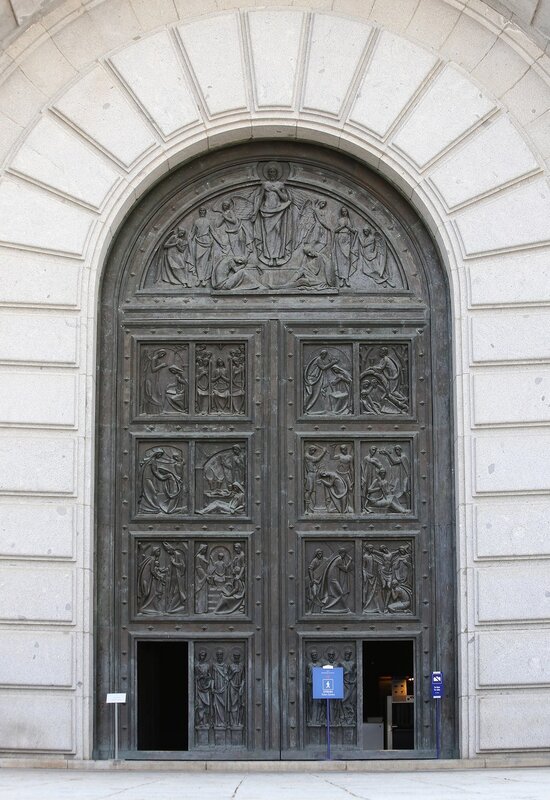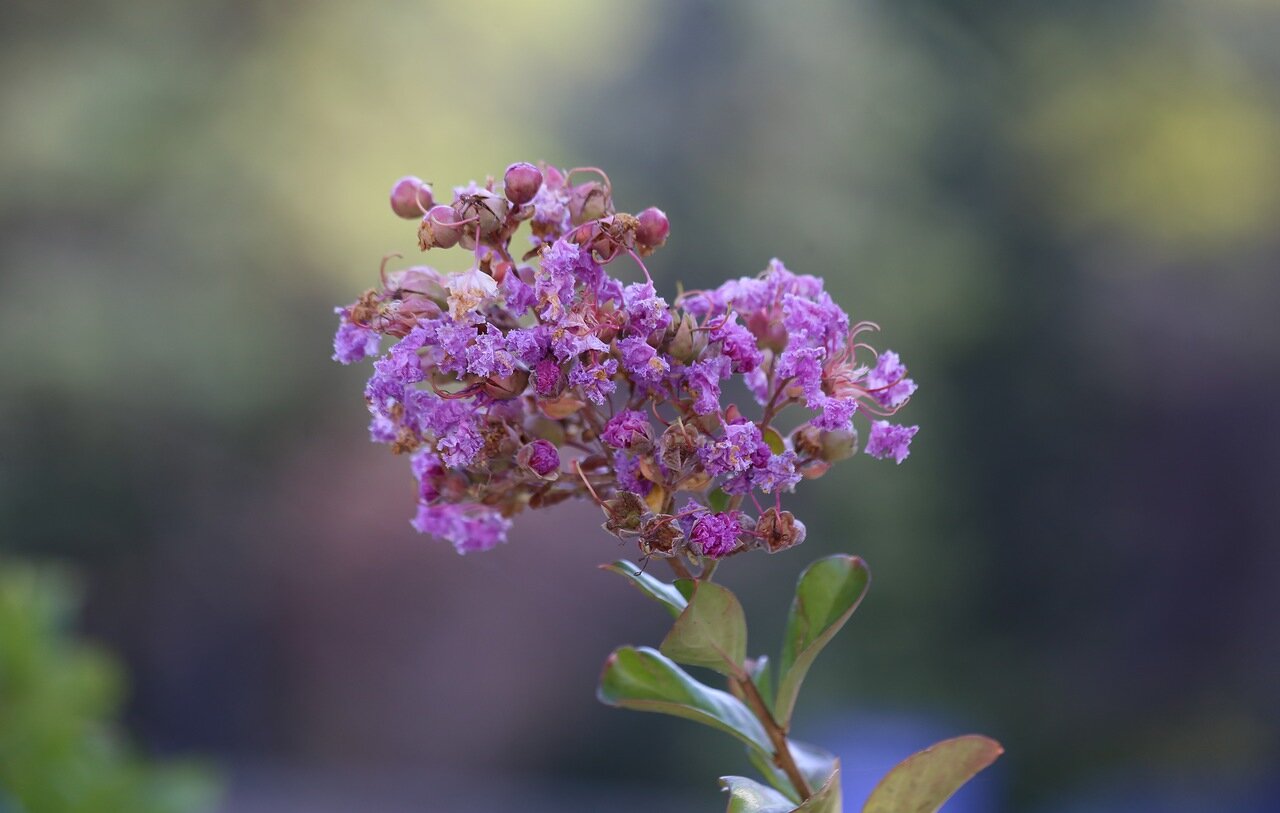Valle de los Caídos. Basilica
In front of the Basilica is an Esplanade with an area of 30 thousand square meters. What struck me when I walked out onto the Esplanade was the absolute, unnatural silence, broken only by the hum of planes passing overhead. There is no singing of birds, no rustling of leaves.

The Basilica extends 262 meters deep into the mountain. 200 thousand cubic meters of rock were extracted for its construction.

The bronze entrance door is made by the sculptor Fernando Cruz Solís.


Inside the Basilica, it is forbidden to take photos, a metal detector is installed at the entrance, and a smiling girl searches things. There is also a souvenir kiosk.

The narthex is separated from the crypt by a lattice work by Diego Mendes and Jose Espies, with images of 40 saints. Tapestries depicting scenes of the Apocalypse can be seen on the walls of the 88-meter-long underground gallery leading to the Basilica. The paintings are a copy of the works of the Flemish master Wilhelm Pannemeiter of the 15th century. (Photos of interiors are taken from the Spanish Wikipedia).

In 1975, after Franco's death, his family asked the government to bury his Body. The dictator's grave is the second in the Basilica - the first crypt belongs to the founder of the Phalanx, Jose Antonio Primo de Riviera, who was executed by the Republicans in 1936. It is also the only burial site of the memorial, where a person who did not die in the Civil war rests. The altar is a granite monolith, with a crucifix, on two sides of which are the graves of Franco and Primo de Rivera.

Around the altar the altar are eight granite statues of the work of Sandrina and Antonio Martin. The dome above the altar, 42 meters high and 40.75 meters in diameter, is a ceramic mosaic of 6 million elements.

To the right and left of the altar there are chapels where the remains of 33877 dead participants of hostilities from both sides are buried.

The Esplanade offers a panorama of the green valley.

In addition to the Basilica, the complex includes a Benedictine Abbey and a guest house, and there is a cafe at the foot of the funicular.

The complex is managed by the Government Committee for cultural heritage. There are no disputes about the monument, the left calls for its closure and even destruction, moderates propose to declare the complex a monument to all those who died in the Civil war. Previously the complex was used for carrying out its activities, popularity. The largest gathering of this public fell on November 20, the day of the death of the founder of the Falange Primo de Rivera, where a solemn memorial mass was held.

In late 2009, the social democratic Zapatero's office has closed the Basilica for a visit under the pretext rentech works,in connection with which technological Basilica protested that this was done to prevent the annual mass. At the same time, the security of the complex was strengthened in order to prevent actions of right-wing radicals. in 2011, the popular conservative party won the election, and on 1 June 2012, the government of Marino Rajoy decided to open access to the Valley. Service in the Basilica resumed, however, prechistinsky activities were still prohibited. Attempts by public organizations to declare the complex a monument to all Spaniards who died in the war, or even in General a "monument to democracy" were not crowned with success. Attempts to move Franco's grave to another location also came to nothing. Conservatives suggest leaving this topic alone, and not "reopening old wounds forever." On November 23, 2014, the government confirmed that there will be no changes in the Valley of the fallen. However, the complex has a great architectural and historical value. At the moment, the Valley of the fallen is not much advertised by official tourist authorities, but access to it is open to both groups and individuals.

![]() From
the San Lorenzo bus station to the monument runs the only bus per day,
which departs at 15: 15 and takes tourists back at 17: 30. The cost of a round-trip ticket is 13 euros, and the entrance fee is also included. Ticket sales start 15 minutes before the bus leaves.
From
the San Lorenzo bus station to the monument runs the only bus per day,
which departs at 15: 15 and takes tourists back at 17: 30. The cost of a round-trip ticket is 13 euros, and the entrance fee is also included. Ticket sales start 15 minutes before the bus leaves.
It is only a 15-minute drive away, so 2 hours is enough to get acquainted with the monument and simply enjoy the beauty and quiet of the local nature. I don't know about the summer, but at the end of September there was only one other girl in a big comfortable bus-a tourist from Italy.

If you drive by car, you can go to the main gate (on the map) and pay for admission (9 euros), then drive along the picturesque mountain road to the complex itself, located two kilometers from the gate. About halfway up, you can see another attraction in the Valley - four round monoliths with a height of 11.5 meters and a diameter of 1.5 meters. The columns were cut out of granite in the 15th century, during the time of Felipe II, under the direction of the Italian engineer Juanelio Turriano( Juanelo Turria), for which they were named Juanelos.
